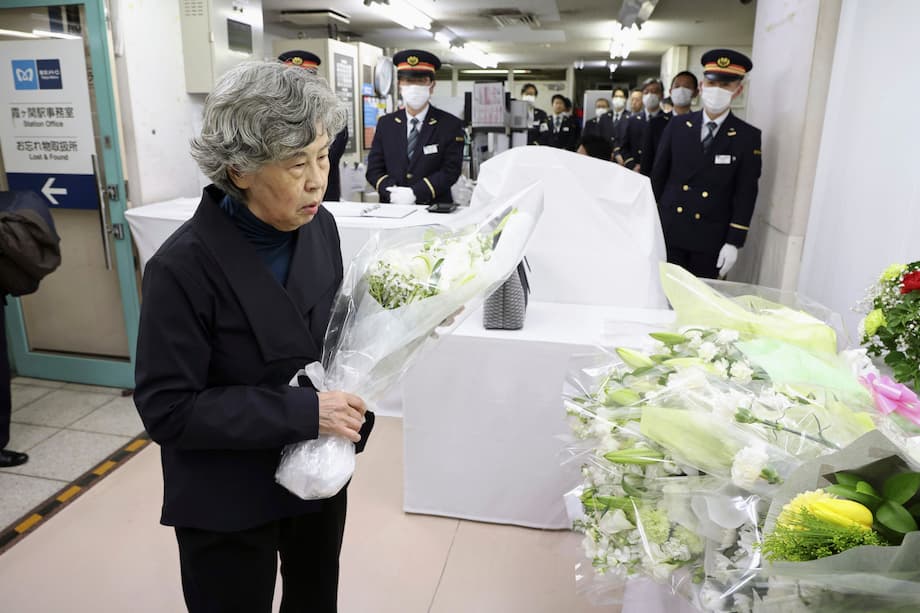The Rise of a New Cult Leader: Shoko Asahara’s Son Takes the Helm of Aleph
Nearly three decades after the deadly sarin gas attack on Tokyo’s subway system shocked the world, the legacy of Aum Shinrikyo continues to cast a long shadow over Japan. In a development that has reignited public concern and government vigilance, Japanese authorities have officially identified the second son of executed cult leader Shoko Asahara as the de facto leader of Aleph, the most prominent successor group to Aum Shinrikyo. This revelation underscores the enduring influence of the cult’s apocalyptic ideology and the persistent threat posed by its offshoots.
- The Rise of a New Cult Leader: Shoko Asahara’s Son Takes the Helm of Aleph
- From Aum Shinrikyo to Aleph: A Legacy of Violence and Secrecy
- Aleph: The Mainstream Successor and Its Ongoing Activities
- The Second Son: Groomed for Leadership
- Government Crackdown: Surveillance, Restrictions, and Asset Seizures
- Public Reaction and the Ongoing Threat
- Why Does Aleph Still Attract Followers?
- The Broader Impact: Lessons from the Aum Shinrikyo Tragedy
- In Summary
The Public Security Intelligence Agency (PSIA) announced in July 2025 that the 31-year-old son, whose name remains undisclosed, has been steering Aleph’s operations for nearly a decade, with the active support of his mother, Tomoko Matsumoto, Asahara’s widow. The agency’s confirmation marks a significant escalation in the government’s scrutiny of Aleph and its leadership, as authorities move to tighten restrictions and prevent a resurgence of cult activity.
From Aum Shinrikyo to Aleph: A Legacy of Violence and Secrecy
To understand the significance of this leadership transition, it is essential to revisit the origins and history of Aum Shinrikyo. Founded in 1987 by Chizuo Matsumoto, known as Shoko Asahara, Aum Shinrikyo began as a yoga and meditation group but quickly evolved into a doomsday cult with a blend of Buddhist, Hindu, and apocalyptic Christian teachings. Asahara’s prophecies of impending disaster and his claims of supernatural powers attracted thousands of followers, many of them highly educated scientists and engineers.
The cult’s notoriety reached its peak on March 20, 1995, when five Aum members released sarin nerve gas on Tokyo’s subway system during rush hour. The attack killed 13 people (some sources report 14) and injured over 5,000, making it one of the worst acts of domestic terrorism in Japanese history. The incident exposed the cult’s capacity for violence and its sophisticated operations, including the production of chemical weapons and the murder of critics and defectors.
In the aftermath, Japanese authorities arrested Asahara and hundreds of his followers. Asahara and 12 senior members were executed in 2018 after years of legal proceedings. The government seized the cult’s assets, and Aum Shinrikyo was officially disbanded. However, the ideology and organizational remnants survived, splintering into several successor groups, the most significant of which is Aleph.
Aleph: The Mainstream Successor and Its Ongoing Activities
Aleph, originally formed as a rebranded version of Aum Shinrikyo in 2000, initially sought to distance itself from Asahara’s crimes. Its new leaders admitted his role in the attacks, set up a compensation program for victims, and attempted to present a more moderate image. Despite these efforts, Aleph has remained under close government surveillance due to its continued reverence for Asahara and its secretive operations.
As of 2025, Aleph is believed to have around 1,190 followers and operates approximately 20 facilities across Japan. The group’s recruitment tactics have evolved, often concealing its true identity and leveraging conspiracy theories to attract new, younger members. According to the PSIA, more than half of the new recruits in the past decade were in their 20s or younger—many born after the 1995 attack, with little direct memory of Aum Shinrikyo’s atrocities.
Authorities have repeatedly imposed restrictions on Aleph, including bans on the use of its facilities and the acceptance of donations. These measures are enforced under legislation targeting organizations responsible for indiscriminate mass murder, reflecting the government’s determination to prevent a repeat of the past.
The Second Son: Groomed for Leadership
The emergence of Asahara’s second son as Aleph’s leader is not a sudden development. According to multiple sources, including Asahi Shimbun and The Japan Times, the son has been involved in organizational decision-making and religious rituals since at least 2014. By 2017, he began referring to himself as a “second-generation guru,” echoing his father’s messianic claims. Voice recordings surfaced in 2024 in which he declared himself the new spiritual leader, and authorities have since confirmed their authenticity.
This succession aligns with Asahara’s own wishes. After his arrest in 1995, Asahara reportedly designated his second son as his successor, a move that has now come to fruition. The son’s rise was facilitated by his mother, Tomoko Matsumoto, who has played a key supporting role. Together, they reside in Saitama Prefecture, where their home has been designated as an Aleph facility by the PSIA.
The group’s internal dynamics have not been without conflict. Attempts to install the son as leader were opposed by Asahara’s third daughter, leading to a split and the formation of a rival faction known as the Yamada group in 2015. Despite these divisions, the son’s leadership is now recognized by both the government and Aleph’s core membership.
Government Crackdown: Surveillance, Restrictions, and Asset Seizures
The Japanese government’s response to Aleph’s continued existence and the son’s leadership has been robust. The PSIA has sought to extend and expand restrictions on Aleph’s activities, including prohibiting the acquisition or leasing of new facilities in multiple prefectures. The agency has also demanded full disclosure of the purposes and activities conducted at the Saitama residence used by Asahara’s widow and son.
Financial investigations have revealed further concerns. In April 2025, Saitama police discovered tens of millions of yen in cash hidden at the family’s residence. This discovery raised suspicions about Aleph’s financial practices and its efforts to conceal assets, particularly in light of a Supreme Court order requiring the group to pay over 1 billion yen in compensation to victims of Aum Shinrikyo’s crimes. Despite repeated court orders and government hearings, Aleph has failed to pay the mandated compensation, prompting accusations of malicious asset concealment and insincere behavior toward victims’ families.
Restrictions on Aleph’s facility use and financial activities have significantly reduced its reported assets, from about 1.3 billion yen in 2019 to just 40 million yen in recent reports. The group has also engaged in profit-making businesses under various names, further complicating efforts to track and seize its resources.
Public Reaction and the Ongoing Threat
The revelation that Asahara’s son now leads Aleph has sparked alarm among survivors and the families of victims. Shizue Takahashi, whose husband was killed in the 1995 attack, expressed deep concern about the potential for a revival of Aum Shinrikyo’s ideology. In an interview with the South China Morning Post, Takahashi warned:
“If he becomes as powerful within the cult as his father was, I believe he will try to expand it and create a new version of Aum Shinrikyo.”
Her fears are not unfounded. The continued recruitment of young members, many of whom lack firsthand knowledge of the cult’s crimes, suggests that Aleph’s ideology still holds appeal for some. The group’s secretive nature and use of modern communication tools make it difficult for authorities to monitor and counter its activities effectively.
The government remains vigilant. Following the executions of Asahara and his top lieutenants in 2018, security was heightened around properties associated with Aleph and other successor groups. Justice Minister Yoko Kamikawa, who approved the executions, has been assigned lifetime protection due to concerns about possible retaliation from cult members.
Why Does Aleph Still Attract Followers?
The persistence of Aleph and its ability to attract new members, especially young people, raises important questions about the social and psychological factors at play. Experts suggest several reasons:
- Search for Meaning: Like many new religious movements, Aleph offers a sense of purpose and belonging to individuals who may feel alienated or dissatisfied with mainstream society.
- Charismatic Leadership: The legacy of Shoko Asahara and the emergence of his son as a new “guru” provide a focal point for devotion and identity.
- Secrecy and Exclusivity: The group’s clandestine operations and selective recruitment create an aura of mystery and exclusivity that can be appealing to some.
- Modern Adaptation: Aleph has adapted its recruitment strategies, using social media and conspiracy theories to reach a new generation of followers.
Despite government efforts to curtail its activities, Aleph’s resilience highlights the challenges of eradicating extremist ideologies, especially when they are embedded in charismatic leadership and tightly knit communities.
The Broader Impact: Lessons from the Aum Shinrikyo Tragedy
The ongoing saga of Aleph and its leadership transition serves as a stark reminder of the dangers posed by cults and extremist groups. The 1995 Tokyo subway attack remains one of the most traumatic events in modern Japanese history, prompting sweeping changes in law enforcement, public safety, and the regulation of religious organizations.
Japan’s response to Aum Shinrikyo’s crimes included the enactment of new laws to monitor and restrict organizations linked to mass violence. The PSIA has conducted hundreds of inspections of Aum-related groups, and the government continues to refine its strategies for surveillance and intervention. However, the persistence of Aleph and the rise of Asahara’s son as its leader demonstrate that the threat has not been eliminated.
For survivors and the families of victims, the pain endures. Many are still waiting for compensation, and the fear of renewed violence lingers. The government’s challenge is to balance the protection of civil liberties with the need for vigilance against groups that espouse dangerous ideologies.
In Summary
- Shoko Asahara’s second son has been officially identified as the leader of Aleph, the main successor group to Aum Shinrikyo.
- Aleph continues to attract new, mostly young, followers despite government restrictions and public awareness of its violent history.
- The Japanese government has imposed strict surveillance and financial restrictions on Aleph, but the group remains secretive and resilient.
- Survivors and victims’ families express deep concern about the potential for a revival of Aum Shinrikyo’s ideology under new leadership.
- The persistence of Aleph highlights the ongoing challenges of combating extremist cults and ensuring justice for victims of past atrocities.




